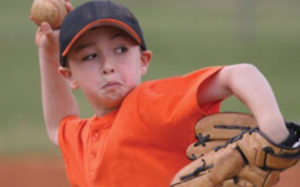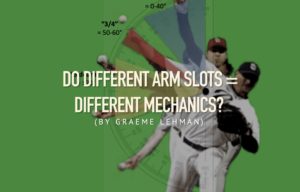doi: 10.1177/1941738117702835. Epub 2017 Apr 12.
Effectiveness of Manual Therapy and Stretching for Baseball Players With Shoulder Range of Motion Deficits
- PMID: 28402756
- PMCID: PMC5435155
- DOI: 10.1177/1941738117702835
Free PMC article
Abstract
Background: Baseball players displaying deficits in shoulder range of motion (ROM) are at increased risk of arm injury. Currently, there is a lack of consensus regarding the best available treatment options to restore shoulder ROM.
Hypothesis: Instrumented manual therapy with self-stretching will result in clinically significant deficit reductions when compared with self-stretching alone.
Study design: Controlled laboratory study.
Methods: Shoulder ROM and humeral torsion were assessed in 60 active baseball players (mean age, 19 ± 2 years) with ROM deficits (nondominant – dominant, ≥15°). Athletes were randomly assigned to receive a single treatment of instrumented manual therapy plus self-stretching (n = 30) or self-stretching only (n = 30). Deficits in internal rotation, horizontal adduction, and total arc of motion were compared between groups immediately before and after a single treatment session. Treatment effectiveness was determined by mean comparison data, and a number-needed-to-treat (NNT) analysis was used for assessing the presence of ROM risk factors.
Results: Prior to intervention, players displayed significant ( P < 0.001) dominant-sided deficits in internal rotation (-26°), total arc of motion (-18°), and horizontal adduction (-17°). After the intervention, both groups displayed significant improvements in ROM, with the instrumented manual therapy plus self-stretching group displaying greater increases in internal rotation (+5°, P = 0.010), total arc of motion (+6°, P = 0.010), and horizontal adduction (+7°, P = 0.004) compared with self-stretching alone. For horizontal adduction deficits, the added use of instrumented manual therapy with self-stretching decreased the NNT to 2.2 (95% CI, 2.1-2.4; P = 0.010).
Conclusion: Instrumented manual therapy with self-stretching significantly reduces ROM risk factors in baseball players with motion deficits when compared with stretching alone.
Clinical relevance: The added benefits of manual therapy may help to reduce ROM deficits in clinical scenarios where stretching alone is ineffective.
Keywords: baseball; glenohumeral internal rotation deficit (GIRD); instrumented manual therapy; posterior shoulder tightness (PST).
Conflict of interest statement
The authors report no potential conflicts of interest in the development and publication of this article.
Similar articles
-
Mechanisms of Shoulder Range of Motion Deficits in Asymptomatic Baseball Players.
Am J Sports Med. 2015 Nov;43(11):2783-93. doi: 10.1177/0363546515602446. Epub 2015 Sep 24.PMID: 26403207 -
Am J Sports Med. 2015 Jun;43(6):1448-54. doi: 10.1177/0363546515575020. Epub 2015 Mar 25.PMID: 25807953 Clinical Trial.
-
The acute effects of sleeper stretches on shoulder range of motion.
J Athl Train. 2008 Jul-Aug;43(4):359-63. doi: 10.4085/1062-6050-43.4.359.PMID: 18668168 Free PMC article. -
J Sport Rehabil. 2018 Jul 1;27(4):385-389. doi: 10.1123/jsr.2016-0213. Epub 2018 Jun 1.PMID: 28253058 Review.
-
The effectiveness of shoulder stretching and joint mobilizations on posterior shoulder tightness.
J Sport Rehabil. 2013 Nov;22(4):313-9. doi: 10.1123/jsr.22.4.313. Epub 2013 Jun 24.PMID: 23799831 Review.







